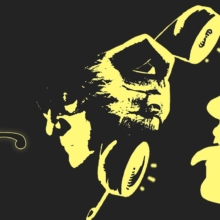Stay Ahead of the Curve With Reinforcement Training

If you have been keeping up with our recent blogs, then you learned a bit about our seven part sales system, or as we call it, The Sandler Submarine. But is knowing a good sales system good enough? Could be, but really it comes down to the implementation of that system, if you want to see tangible results. To be successful, you need to stay ahead of your prospect when it comes to knowledge about effective negotiating and selling techniques. Otherwise, you may fall in to the traps of the traditional selling model, and then prospects got you where they want you. They know all your tricks and have a few of their own to take control of the process.
So how do you combat this competitive edge the prospect has gained? Well, training is probably the most important way to overcome these kinds of obstacles. Even if you have been thoroughly trained and are a seasoned veteran, you should maintain a training schedule to keep you sharp.
This is one of the big reasons that it makes a lot of sense to continue training on an ongoing and regular basis. Obviously the bulk of the learning is going to happen in the first 12 to 18 months, but after that, participating in a training maintenance program will keep you sharp and on top of the latest sales approaches. There are really two types of training when you boil it all down: impact training and ongoing reinforcement training. Impact training programs are usually anywhere from a few hours to a week long workshop. When you finish, you’re lifted up and motivated. What happens, though, is that as soon as you leave the workshop and get cut off in traffic or a few weeks go by, the majority of what you learned is forgotten and never even applied.
On the other hand, ongoing reinforcement training programs use time and reinforcement to modify your behaviors, your belief systems, and your techniques. You won’t “get it” in a few hours or even a week. If that were the case, everyone would be a scratch golfer with only a few hours or a week of coaching. (Yeah, right.) To make matters a little more challenging, it’s not only just a matter of modifying the way you do things, it’s a matter of modifying the way you feel about the way you do things. In other words, just knowing the steps of the selling system is not enough. You have to manage all the limiting feelings and tics that may make you uncomfortable as you execute new tasks, such as calling on a CEO or talking to strangers. You must change beliefs and feelings that hold you back, such as believing an I’ll think it over will eventually turn into a yes. So there is a bit of personal pain involved here, but it will be well worth it as you hone your new selling skills.
Effective sales training always emphasizes reinforcement, and there’s a simple reason for that. It works. Through on-going reinforcement training, people modify their behaviors. But they also update self-limiting selling beliefs and identify goals that truly motivate them. I’d like to be able to tell you that it all happens overnight, once you memorize the compartments of the submarine. But it doesn’t just happen overnight, it takes time and practice before you will master these new ways of selling, and revolves around pain.
Uncovering pain is the basic premise behind the entire Sandler 7 step process, but in particular, it’s the pivotal step 3 that is vital to your success. As you build up relationships with new prospects and gain their trust, you can begin to see their guard come down. When the prospect trusts you, they will start to share some of their pain and emotions with you. People buy emotionally, so this is where you gain your edge, and show the prospect how your products or services can solve their problem and relieve their pain. But, in order to get to this point, you need to build-up and maintain your new selling repertoire. Thus, Sandler reinforcement training is the way you will stay sharp, and ahead of your competitors.
Source: http://EzineArticles.com/10089166











